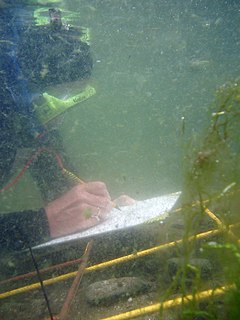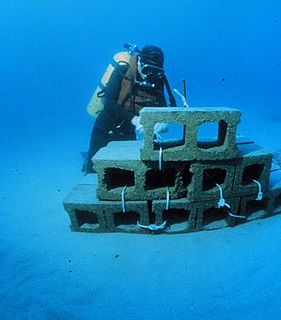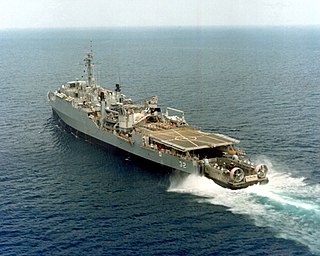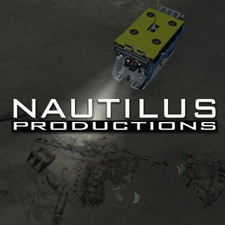
Underwater archaeology is archaeology practiced underwater. As with all other branches of archaeology, it evolved from its roots in pre-history and in the classical era to include sites from the historical and industrial eras. Its acceptance has been a relatively late development due to the difficulties of accessing and working underwater sites, and because the application of archaeology to underwater sites initially emerged from the skills and tools developed by shipwreck salvagers. As a result, underwater archaeology initially struggled to establish itself as bona fide archaeological research. The situation changed when universities began teaching the subject and when a theoretical and practical base for the sub-discipline was firmly established. Underwater archaeology now has a number of branches including, after it became broadly accepted in the late 1980s, maritime archaeology: the scientifically based study of past human life, behaviours and cultures and their activities in, on, around and (lately) under the sea, estuaries and rivers. This is most often effected using the physical remains found in, around or under salt or fresh water or buried beneath water-logged sediment. In recent years, the study of submerged WWII sites and of submerged aircraft in the form of underwater aviation archaeology have also emerged as bona fide activity.

A shipwreck is the wreckage of a ship that is located either beached on land or sunken to the bottom of a body of water. Shipwrecking may be intentional or unintentional. Angela Croome reported in January 1999 that there were approximately three million shipwrecks worldwide..

Wreck diving is recreational diving where the wreckage of ships, aircraft and other artificial structures are explored. Although most wreck dive sites are at shipwrecks, there is an increasing trend to scuttle retired ships to create artificial reef sites. Diving to crashed aircraft can also be considered wreck diving. The recreation of wreck diving makes no distinction as to how the vessel ended up on the bottom.

A remotely operated underwater vehicle is a tethered underwater mobile device.

An artificial reef is a human-created underwater structure, typically built to promote marine life in areas with a generally featureless bottom, to control erosion, block ship passage, block the use of trawling nets, or improve surfing.

USS Spiegel Grove (LSD-32) was a Thomaston-class dock landing ship of the United States Navy. She was named for Spiegel Grove, the home and estate in Fremont, Ohio of Rutherford B. Hayes, the 19th President of the United States.

San Pedro Underwater Archaeological Preserve State Park is a Florida State Park located in 18 feet (5.5 m) of water, approximately 1.25 nautical miles (2.32 km) south of Indian Key. It became the second Florida Underwater Archaeological Preserve when it opened to the public in 1989. The heart of the park is the San Pedro, a submerged shipwreck from a 1733 Spanish flotilla, around which visitors can dive and snorkel. The San Pedro, a 287-ton Dutch-built vessel, and 21 other Spanish ships under the command of Rodrigo de Torres left Havana, Cuba, on Friday, July 13, 1733, bound for Spain. The San Pedro carried a cargo of 16,000 silver Mexican pesos and crates of Chinese porcelain. A hurricane struck the fleet, while entering the Straits of Florida, and sank or swamped most of the fleet. The wrecksite includes an "eighteenth century anchor, replica cannons, ballast stones encrusted with coral, a dedication plaque, and a mooring buoy system." The wreck was added to the U.S. National Register of Historic Places on May 31, 2001.

The archaeology of shipwrecks is the field of archaeology specialized most commonly in the study and exploration of shipwrecks. Its techniques combine those of archaeology with those of diving to become Underwater archaeology. However, shipwrecks are discovered on what have become terrestrial sites.

Osborne Reef is an artificial reef off the coast of Fort Lauderdale, Florida. Originally constructed of concrete jacks, it was the subject of an ambitious expansion project utilizing old and discarded tires. The expansion ultimately failed, and the reef has come to be considered an environmental disaster—ultimately doing more harm than good in the coastal Florida waters.

The Vamar is a shipwreck near Mexico Beach, Florida, United States. It is located 3.7 miles offshore from Mexico Beach. It became the ninth Florida Underwater Archaeological Preserve when it was dedicated in 2004. On April 10, 2006, it was added to the U.S. National Register of Historic Places.
MV Adolphus Busch was a cargo ship that was sunk off of Looe Key, Florida, as an artificial reef and dive site.
Wreck Alley also known as "Sunken Harbor" is an area a few miles off the coast of Mission Beach, San Diego, California with several ships intentionally sunk as artificial reefs and as Scuba diving attractions for wreck divers.

Sinking ships for wreck diving sites is the practice of scuttling old ships to produce artificial reefs suitable for wreck diving, to benefit from commercial revenues from recreational diving of the shipwreck, or to produce a diver training site.
The Center for Maritime Archaeology and Conservation (CMAC) was created in May 2005 by the regents of Texas A&M University.

The Gibraltar Artificial Reef, or simply the Gibraltar Reef, is the ongoing artificial reef project for the Mediterranean waters surrounding the British overseas territory of Gibraltar. The initiative was started in 1973 by Dr. Eric Shaw of the Helping Hand Trust.

Alligator Reef is a coral reef located within the Florida Keys National Marine Sanctuary. It lies to the southeast of Upper Matecumbe Key. This reef lies within a Sanctuary Preservation Area (SPA).

The Molinere Underwater Sculpture Park is a collection of ecological underwater contemporary art located in the Caribbean sea off the west coast of Grenada, West Indies and was created by British sculptor Jason deCaires Taylor. In May 2006 the world's first underwater sculpture park was open for public viewing. Taylor's aim was to engage local people with the underwater environment that surrounds them using his works which are derived from life casts of the local community. He installed concrete figures onto the ocean floor, mostly consisting of a range of human forms, from solitary individuals to a ring of children holding hands, facing into the oceanic currents.

Recreational dive sites are specific places that recreational scuba divers go to enjoy the underwater environment. They include recreational diver training sites and technical diving sites beyond the range generally accepted for recreational diving. In this context all diving done for recreational purposes is included. Professional diving tends to be done where the job is, and with the exception of the recreational diving service industry, does not generally occur at specific sites chosen for their easy access, pleasant conditions or interesting features.
Save Ontario Shipwrecks (SOS) is a Provincial Heritage Organization in Ontario, Canada. SOS is a public charitable organization which operates through Local Chapter Committees supported by a Provincial Board of Directors and Provincial Executive.

Nautilus Productions LLC is an American video production, stock footage, and photography company incorporated in Fayetteville, North Carolina in 1997. The principals are producer/director Rick Allen and photographer Cindy Burnham. Nautilus specializes in documentary production and underwater videography, and produced QAR DiveLive, a live webcast of underwater archaeology filmed at the wreck of the Queen Anne's Revenge in 2000 and 2001.















